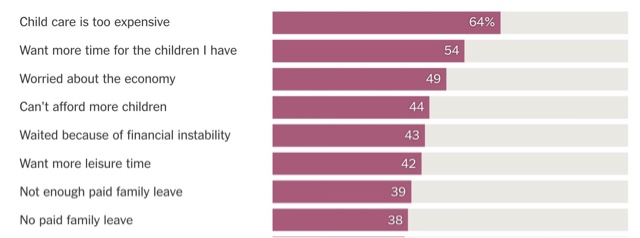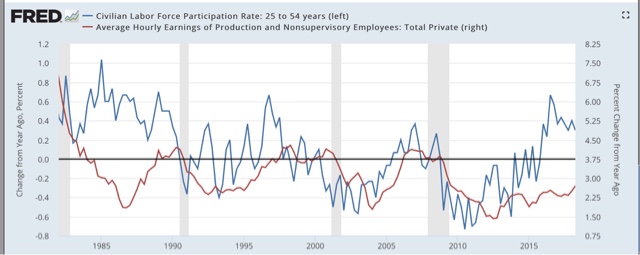I was going to put up a short piece about wages this morning, but it has turned into a longer, more comprehensive piece, so in the meantime, here are some teasers to ponder. 1. There is a direct relationship between the economy generally, and child care costs specifically, and couples’ decisions about whether or not to have more children: The below graph comes from Vox.com. It is the top eight reasons that couples give for not having (more) children: Note that 6 of the 8 reasons have to do with the economy, and 4 of those specifically have to do with the costs of child care. 2. While correlation is not causation, nonetheless in the modern era, there has been a clear correlation whereby prime age labor force participation leads nominal wage
Topics:
NewDealdemocrat considers the following as important: Journalism, politics, Taxes/regulation, US/Global Economics
This could be interesting, too:
Robert Skidelsky writes Lord Skidelsky to ask His Majesty’s Government what is their policy with regard to the Ukraine war following the new policy of the government of the United States of America.
Joel Eissenberg writes No Invading Allies Act
Ken Melvin writes A Developed Taste
Bill Haskell writes The North American Automobile Industry Waits for Trump and the Gov. to Act
1. There is a direct relationship between the economy generally, and child care costs specifically, and couples’ decisions about whether or not to have more children:
The below graph comes from Vox.com. It is the top eight reasons that couples give for not having (more) children:
Note that 6 of the 8 reasons have to do with the economy, and 4 of those specifically have to do with the costs of child care.
2. While correlation is not causation, nonetheless in the modern era, there has been a clear correlation whereby prime age labor force participation leads nominal wage growth:
3. Despite #2 above, in the shorter term there appears to be an inverse correlation between the rate of prime age employment growth and relative wage growth:
I’ll flesh this out in the more comprehensive post.



